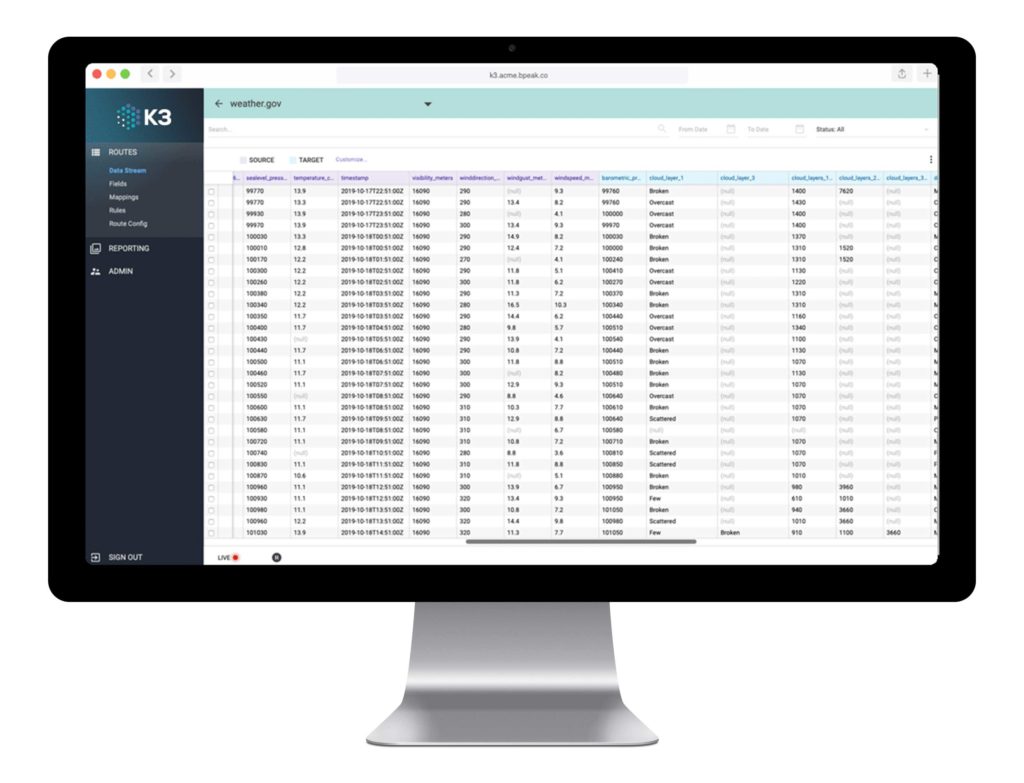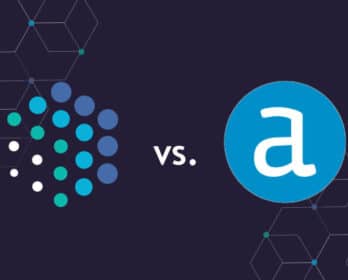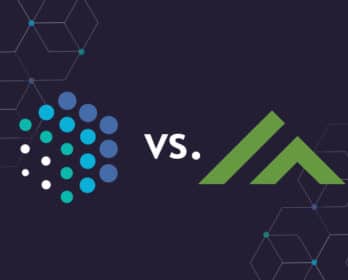The Major Differences between SSIS ETL and K3 ETL
Is your organization considering an ETL solution for its data needs? Here is a high-level comparison of the SSIS ETL and K3 ETL platforms to determine which option is a better fit.
- Ease of use: SSIS requires expert-level coding knowledge; K3 visualizes and normalizes data with no coding required.
- Scalability: SSIS is challenging to scale due to its high-code environment; K3 offers a low-code environment with one price.
- Data deployment: SSIS is complex with a steep learning curve; K3 has ETL right in the user interface that allows you to perform mapping, data rules and other functions.
- Data-driven processes: SSIS offers limited data orchestration except through custom code; K3’s low-code functionality reduces the need for time-consuming data migrations.
- Sustainability: SSIS is exceptionally fragile for production environments; K3 understands difficult enterprise systems using a low-code, high-supported environment.
THE BIG TAKEAWAY:
- SSIS has a steep learning curve since it requires in-depth coding knowledge.
- SSIS is challenging to scale due to its high-code environment.
- SSIS offers little third-party support, leading to fragile integrations that have a negative impact over time.
SSIS and K3 Overview
SSIS (SQL Server Integration Services) is a Microsoft tool for data integration tied to SQL Server. The ETL process is made easier with a tool like SSIS, which performs data integration, transformation and migration tasks. SSIS is a coding-based solution that is best matched with expert-level developers. It offers pros like in-depth documentation, high customization and ease of configuration. The solution also has functionalities like SSIS data prep, SSIS data load and is commonly used to create ETL packages for data warehousing.
K3 Enterprise is a low-code integration application with hundreds of K3 adapters. Unlike SSIS, it is a ready-to-go-solution that eliminates the headache of a high-code environment. K3 ETL doesn’t require an army of IT professionals so it saves time and money. It’s built to handle legacy archetypal data forms, non-conforming data sources and also features K3 data prep and K3 data load functionalities. With K3 ETL, you can visualize your data, map it and then flow it to files, APIs, databases, data warehouses, and data lakes like Redshift or Snowflake.
Let’s take a more in-depth look at how SSIS ETL and K3 ETL compare side-by-side.
FEATURE COMPARISON OF SSIS V/S K3

SSIS
Data Deployment
Hosted Cloud Deployment
Yes
No
Private Cloud Deployment
Yes
Yes
On Premise Deployment
Yes
Yes
Data Stays Private Guarantee
Yes
N/A
Scalability
No Per User Charges
Yes
No
Database CDC Connections (see databases)
Yes
No
SaaS Connections (see connectors)
Yes
No
Multiple Formats (XML, JSON, EDI, etc.)
Yes
No
Features Comparison
Data Rules Engines
Yes
No
Low Code Data Route Configuration
Yes
No
Low Code ETL
Yes
No
Data Orchestration
Yes
No
Low Learning Curve
Yes
No
Audit Trail
Yes
No
Test/Prod accounts included
Yes
No
CAPABILITIES AND FUNCTIONAL COMPARISON IN-DEPTH LOOK
K3
SSIS
EASE OF USE
K3 ETL offers a low-code environment that doesn’t require programming expertise. Whether you’re flowing data into Snowflake, Redshift or legacy databases, K3 is an intuitive, out-of-the-box solution.
SSIS ETL is a high-code environment that requires the expertise of seasoned developers. It functions well in 100-percent Microsoft setups, but is difficult to stand up, test and deploy in new environments and also has on-premises limitations.
SCALABILITY
K3 ETL is optimized for scalability, and the low-code environment makes it accessible to non-technical users and experienced developers alike. With K3, you get one solution with one price.
SSIS ETL is slow to scale due to its high-code environment. While SSIS is a relatively affordable option, expect long project durations and bottlenecks.
DATA DEPLOYMENT
K3 ETL does not require API development. Instead, it offers 100 pre-built connectors for upstream and downstream data needs, visual data mapping and a low-code data rules engine to streamline custom development.
SSIS is a coding-based solution for expert-level developers. For anyone else, there is a steep learning curve to successfully get data moving.
DATA-DRIVEN PROCESSES
K3 ETL delivers low-code functionality that reduces the need for time-consuming data migrations. Transform, filter and unify data in any format through an intuitive UI and send it anywhere.
SSIS ETL only offers partial data orchestration except through custom code. This causes unnecessary strain, especially on organizations with small to medium IT teams and limited resources.
SUSTAINABILITY
K3 ETL understands difficult enterprise systems using a low-code, high-supported environment. It places less burden on your IT team by ensuring technical tasks can be performed by non-technical people.
SSIS ETL lacks long-term sustainability and is exceptionally fragile for production environments. Data velocity is nearly impossible because it’s tied to one specific IT person or department within your organization.
K3 IS BEST FOR EASE OF USE AND SUSTAINABILITY
SSIS ETL is a solid choice for organizations with giant, complicated data volumes. K3 ETL is ideal for organizations that want a ready-to-go solution with a low-coding environment. Let your IT team focus on other things that matter with K3’s future-proof architecture. Setup a free demo to see how low-code K3 ETL can empower your data transformation.








